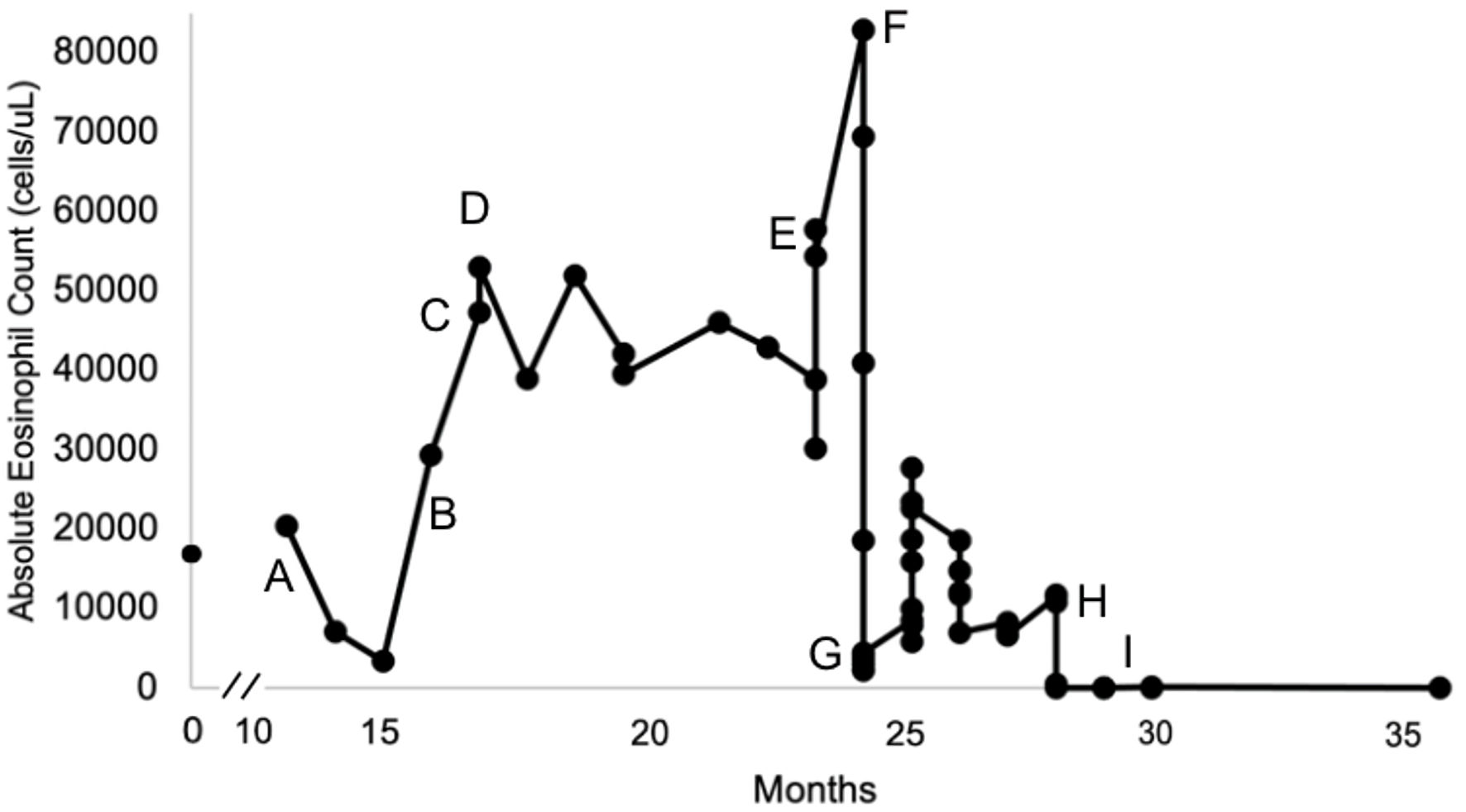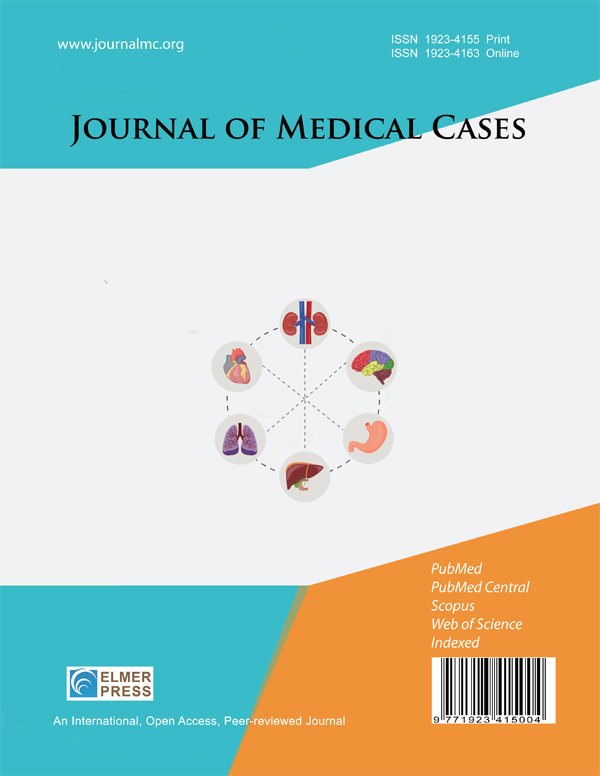Benralizumab in a Patient With Refractory Eosinophilic Endocarditis
DOI:
https://doi.org/10.14740/jmc5168Keywords:
Idiopathic hypereosinophilic syndrome, Loeffler’s endocarditis, Benralizumab, IL-5, IL-5 receptor antagonistAbstract
Hypereosinophilic syndrome (HES) is a hematologic disorder characterized by an increased absolute eosinophil count (AEC) that can lead to tissue infiltration and damage. Idiopathic HES (iHES) comprises a subset of patients with HES, in which a reactive cause such as infections or an inflammatory process cannot be identified, and clonality is not demonstrable. iHES remains a challenge to treat since there is no specific mutation to target. Interleukin-5 (IL-5) is a cytokine responsible for the proliferation and maturation of eosinophils. Anti-IL-5 and anti-IL-5 receptor therapies represent recent advancements in the management of these disorders. A 25-year-old female developed transient and recurrent visual deficits lasting several minutes at a time. Marked peripheral blood eosinophilia was noted. Over a year, she developed Loeffler’s endocarditis (LE), leading to microvascular ischemic strokes and heart failure due to mitral valve infiltration. The patient needed an urgent mitral valve replacement. Multiple lines of standard eosinophil-lowering agents were tried and appeared ineffective or could not be maximally dosed due to hematologic dose-limiting toxicity. Benralizumab (Fasenra®) is an IL-5 receptor antagonist indicated for eosinophilic asthma and eosinophilic granulomatosis with polyangiitis (EGPA) but not Food and Drug Administration (FDA)-approved for other HESs. Off-label benralizumab was tried, and her eosinophil count normalized within a week, allowing hemodynamic stability for a mitral valve replacement. After a year of continued bimonthly treatment with off-label benralizumab, her eosinophil count remains within normal limits, resulting in stabilization of her cardiac parameters. Off-label benralizumab treatment was effective in controlling our patient’s eosinophilic counts and preventing further cardiac injury. Benralizumab should be considered earlier in the treatment of LE, particularly when rapid control of the eosinophil count is needed.

Published
Issue
Section
License
Copyright (c) 2025 The authors

This work is licensed under a Creative Commons Attribution-NonCommercial 4.0 International License.









